Charts of the Day: China’s Trade Rebuttal
China’s cabinet released a 36,000-word white paper blasting the U.S. for “brazenly preached unilateralism, protectionism and economic hegemony,” and “making false accusations against many countries and regions — particularly China,” an hour after new American tariffs on $200 billion in Chinese goods went into effect on Monday.
The white paper is by far China’s most comprehensive response to the U.S. since trade frictions started. The Chinese government said it hopes the paper will clarify the facts and demonstrate that the China-U.S. economic and trade relationship is mutually beneficial.
To help readers better grasp China’s argument, Caixin has created eight charts from data from the white paper. Topics include trade in goods and services and China’s intellectual property payments to the U.S.
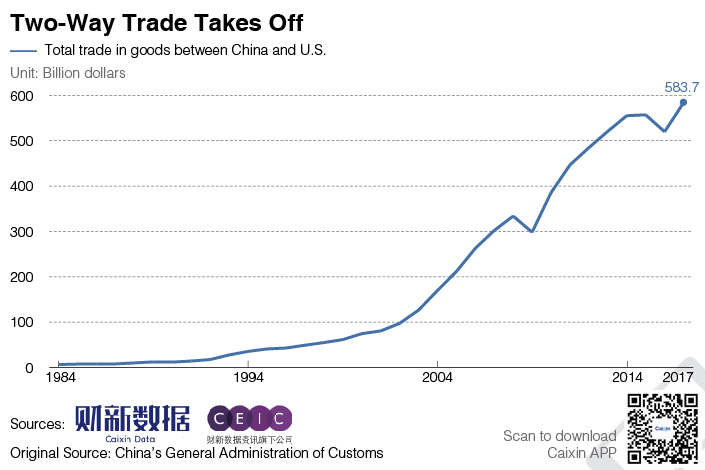 |
The trade in goods between China and the U.S. grew sevenfold from 2001 to 2017, the year China joined the World Trade Organization, according to China’s General Administration of Customs.
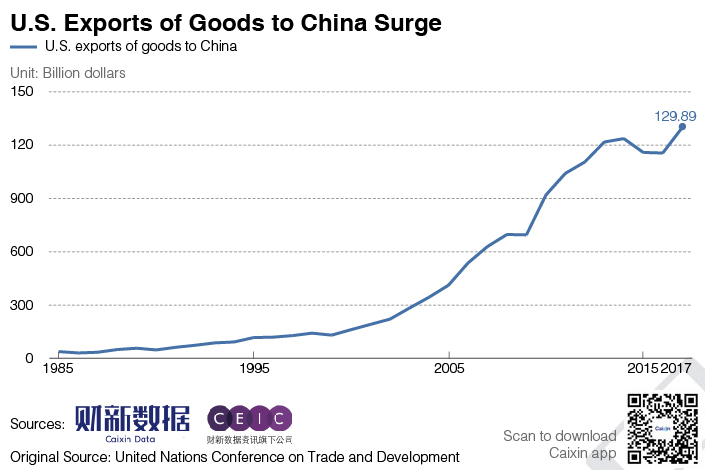 |
From 2001 to 2017, U.S. goods exports to China rose 577%, far surpassing the average growth rate of 112% for overall U.S. exports, according to data from the United Nations Conference on Trade and Development.
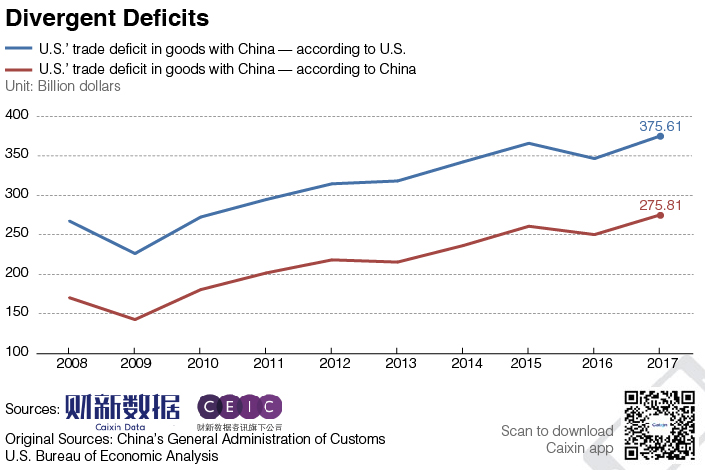 |
There has been a significant and long-standing statistical divergence between the two countries in their calculations of the U.S. deficit in trade in goods with China, the white paper said. But what’s the reason for the $100 billion difference? The white paper said that the difference is a result of the U.S. overstating the country’s trade deficit with China.
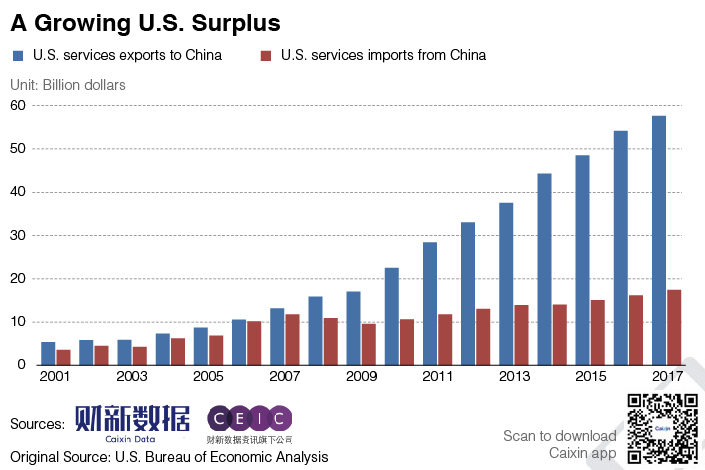 |
U.S. services exports to China grew 340% from 2007 to 2017, according to data from U.S. Bureau of Economic Analysis. Over the same period, U.S. services exports to other countries and regions grew by 180%.
 |
The U.S. is China’s largest source of intellectual property imports. From 2012 to 2016, China imported nearly 28,000 items of intellectual property from the US, according to data from Chinese Ministry of Commerce.
 |
The U.S. is China’s biggest export market and China’s sixth biggest source of goods imports, according to data from Chinese customs.
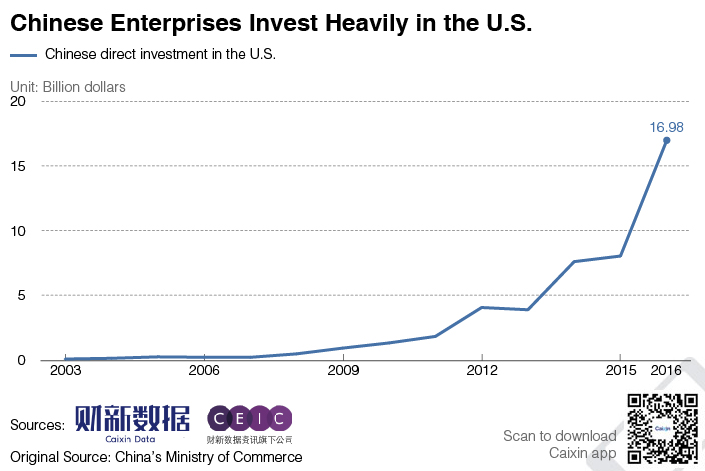 |
As China’s outbound investment grew, Chinese direct investment in the U.S. rose by more than 260 times from 2003 to 2016, according to Caixin calculations based on Ministry of Commerce data.
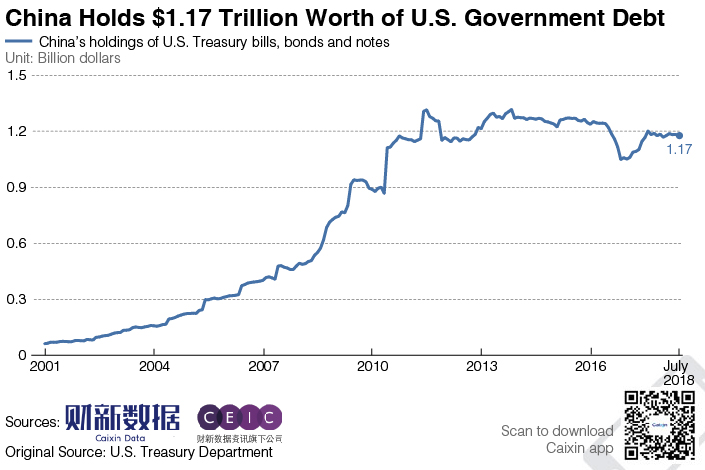 |
China has made significant investments in the U.S., the white paper says. The country is the largest foreign holder of U.S. debt.
Contact reporter Charlotte Yang (yutingyang@caixin.com)

- 1PDD Fires Government Relations Staff After Fistfight With Regulators
- 2China Ramps Up Effort to Offload Vast Supply of Unsold Homes
- 3China’s Elite-Focused Schools Are Failing Most Students, Top Educators Say
- 4In Depth: China’s Developers Try to Modernize After Surge in Subpar Homes
- 5Cover Story: Trading by Algorithm: Who is Responsible When AI Calls the Shots?
- 1Power To The People: Pintec Serves A Booming Consumer Class
- 2Largest hotel group in Europe accepts UnionPay
- 3UnionPay mobile QuickPass debuts in Hong Kong
- 4UnionPay International launches premium catering privilege U Dining Collection
- 5UnionPay International’s U Plan has covered over 1600 stores overseas





